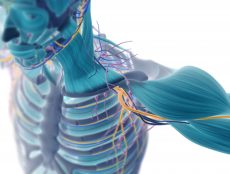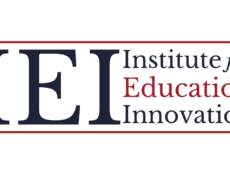
Interviews
Kristine Moncada on eLearning in the Agricultural Sector
By Cait Etherington
February 21, 2017
eLearning continues to transform work and training across sectors and agriculture is no exception. In this week’s eLearningInside News interview, we talk to Kristine Moncada, an agricultural scientist based at the University of Minnesota, about a new eLearning initiative for farmers. When fully launched, the Principles for Transitioning to Organic Farming Project will support agricultural workers exploring organic practices, as well as undergraduate students enrolled in sustainable agricultural courses. As the following discussion demonstrates, there are many reasons why eLearning in the agricultural sector is taking root nationwide and why we can expect to see more eLearning in this sector moving forward.
An Overview of the Principles for Transitioning to Organic Farming Project
Cait Etherington: You’re an agricultural scientist, but can you talk about your specific role in the Principles for Transitioning to Organic Farming Project?
Kristine Moncada: Dr. Craig Sheaffer is the Principal Investigator for this project. I am the project coordinator, meaning that I oversee the day-to-day activities of our team. This project has three primary objectives: to develop interactive modules on transitioning to organic farming, to create decision case studies that profile dilemmas of organic and transitioning farmers, and to conduct workshops on transitioning to organic. I generate much of the content that will go in our interactive modules and I will be adding functionality to all the modules using Adobe Presenter. We also have a team of decision case writers that includes partners from the Midwest Organic and Sustainable Educational Service (MOSES) and the Center for Integrated Agricultural Systems (CIAS) at the University of Wisconsin-Madison. Dr. Sheaffer and I edit the decision case studies that are generated from our team of case writers. Our team has organized two series of workshops on transitioning in 2015 and 2016 with almost 200 attendees.
CE: The Principles for Transitioning to Organic Farming Project is based at the University of Minnesota, but you have partnered with a separate organization, eOrganic, to help educate farmers transitioning to organic practices. What is eOrganic’s primary mandate?
KM: The USDA is one of the sponsors of eOrganic and our project is also funded by the USDA, under the National Institute of Food and Agriculture. eOrganic is a national organization dedicated to organic education so it made a lot of sense for us to partner with them. For the projects they partner with, eOrganic helps by: 1) assisting in video development, 2) facilitating webinars, 3) providing online workspace for researchers 4) developing project websites, and 5) conducting PR at a national level to inform people about project activities. I am not part of eOrganic’s personnel so I don’t speak for them, but the mandate listed on their website is: “Our mission is to foster a research and outreach community, engage farmers and agricultural professionals through trainings and publications, and support research and outreach projects.”
Why eLearning is an Effective Approach in the Agricultural Sector
 CE: Why is education essential to support growers as they move from traditional methods of farming to organics? What is there to learn?
CE: Why is education essential to support growers as they move from traditional methods of farming to organics? What is there to learn?
KM: This is a pretty big topic to cover! When farmers transition from conventional to organic agriculture, there can be an overwhelming amount to learn because organic agriculture is a whole new production system based on ecological principles. They need to learn how to grow new crops, such as alfalfa and small grains, in addition to corn and soybean they are already growing. They need to figure out how to grow all their crops successfully without synthetic pesticides and fertilizers. There can be a steep learning curve, with the top concerns being weed management and providing nutrients to crops. One of the most difficult aspects of transitioning is that it takes three years of growing crops without prohibited materials to become certified organic and to be able to get the organic crop premiums.
CE: What types of courses are being offered through the eOrganic partnership? How do participating growers access eOrganic courses (e.g., can they access the courses on laptops as well as from their mobile phones)? Also, on average, how long do the courses take to complete?
KM: While we are partnering with eOrganic and others, we will ultimately be creating our own website at the University of Minnesota to house the materials we are developing. Much of our content has been developed, but final review and adding interactive functionality are still in progress. Our learning modules could be considered a course on organic agriculture when put together, but they could also be used separately in a modular fashion to suit different educators’ needs. We will have 20 modules that will each run between 20 to 30 minutes. In total, it will be about 8 hours’ worth of material. The materials will be accessible from multiple platforms. Our project will be completed and online before the end of 2017.
By the way, eOrganic offers many materials to educate farmers including articles, videos, an Ask-an-Expert feature, and information on the projects they partner with (which is how you found out about our project). My favorite feature of eOrganic is their webinars, which are an excellent way to learn the latest about a topic from leading researchers. I believe eOrganic has plans to develop online courses in the future; I would ask them on the status of this program.
CE: Why is eLearning in the agricultural sector effective? How does it help reach your target audience, which in this case, is people running farms in the Midwest region?
KM: We actually have two target audiences: farmers considering transitioning to organic and undergraduate students in sustainable agriculture classes. Obviously, farmers are out in the country and online materials may be a great deal more accessible. Also, farmers are some of the busiest people and eLearning allows them to fit in learning when they have time. For example, when we hold workshops around the state, many of the farmers are driving a few hours each way to attend so that’s a substantial time commitment. As far as students are concerned, most are accustomed to eLearning by having already taken courses online or through flipped classrooms, which are becoming more common.
eLearning in the Agricultural Sector: Access, Feedback and Future Projects
CE: Have you had any feedback yet? Do the growers in your project prefer to do in-person seminars or online courses or a combination of the two? Have you found any differences in terms of age or location (e.g., are the online courses more popular with younger growers)?
KM: Our project hasn’t been published yet, but we have been using the materials we’ve been developing in workshops and classes. Our feedback so far has been good and there seems to be a great need for materials on transitioning based on what farmers have said. Attendees at our workshops have been young and old, but it is too early to say what kind of demographics our online work will attract. Incidentally, we anticipate having our work online by the end of this year so please feel free to check back with us later.
CE: You link out to another eLearning in the agricultural sector project on your site: All about Corn. Who does this eLearning project target and what is its major focus?
KM: All About Corn targets high school and undergraduate students who may or may not have a background in agriculture. This is a younger audience than our Principles for Transitioning project. Like the title indicates, we cover the topic of corn very comprehensively. Students can learn about how corn is grown, how hybrids are created, all the different ways corn is used, the biology of corn, and even a little about corn’s history. Because we cover so many different aspects, educators can use these modules in a variety of courses, not just in crop production, but also in botany, physiology, and crop breeding.
CE: Moving forward, do you think we will continue to see more eLearning in the agricultural sector nationwide?
KM: I believe so. Farmers and students have different learning styles so the more tools we have to teach, the better. eLearning dramatically increases accessibility to quality materials and that’s a valuable thing for our society.
CE: Thanks for your thoughts on eLearning in the agricultural sector. We look forward to hearing more about your project as it unfolds!









One Comment